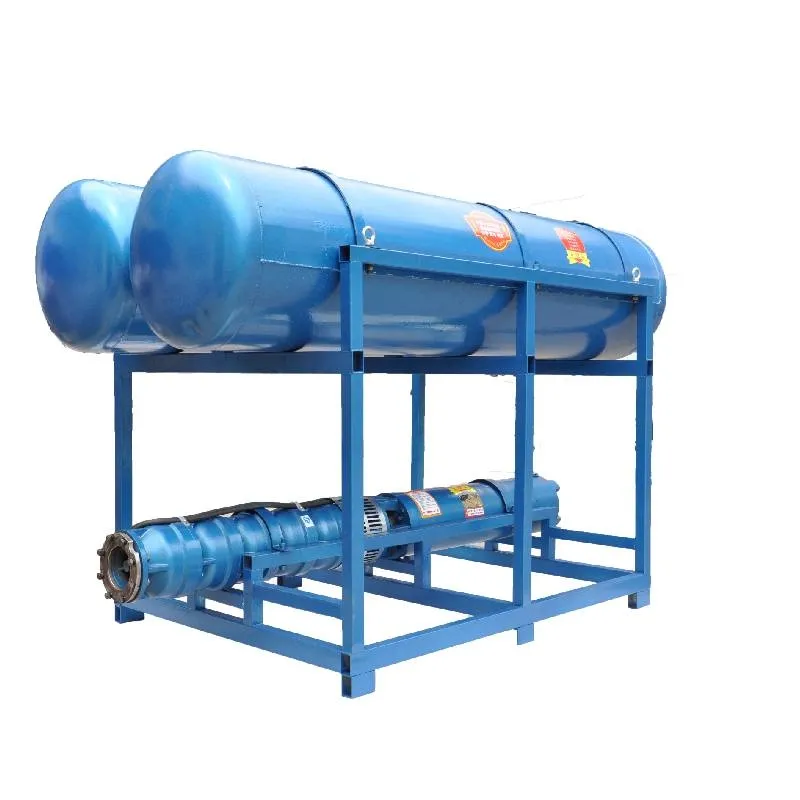Aug . 11, 2024 17:38 Back to list
Common Issues and Solutions for Deep Well Submersible Pumps in Residential Applications
Troubleshooting Deep Well Submersible Pumps
Deep well submersible pumps are essential components in water supply systems, especially in agricultural, municipal, and industrial applications. These pumps are submerged underwater and designed to lift water from deep aquifers. While they are robust and efficient, problems can arise over time, affecting their performance. Here, we will discuss common issues and provide troubleshooting tips for deep well submersible pumps.
Common Issues with Deep Well Submersible Pumps
1. Pump Won't Start One of the most common issues is when the pump does not start. This can be caused by several factors, including electrical issues such as a blown fuse, tripped circuit breaker, or faulty wiring. Additionally, a malfunctioning pressure switch or low water levels can also prevent the pump from starting.
2. Pump Runs but Delivers Low or No Water If the pump operates but fails to deliver the expected amount of water, the issue may be due to a damaged impeller, clogged intake screen, or a collapsed discharge pipe. Inadequate power supply or a restricted well can also lead to decreased output.
3. Excessive Noise or Vibration Submersible pumps are designed to operate quietly. If you notice excessive noise or vibrations, it may signal that something is wrong. Common culprits include misalignment of the pump motor, damaged bearings, or cavitation caused by inappropriate pump operation conditions.
4. Overheating Continuous operation in a shallow water table or insufficient cooling can cause the motor to overheat. This can lead to premature wear or failure of the pump. If the pump is running dry, it exacerbates the issue since it relies on water for cooling.
5. Frequent Tripping If the pump frequently trips the circuit breaker, it may indicate electrical issues or a problem with the motor windings. It could also point to an overworked pump due to a high head pressure or low water production, leading to excess internal resistance.
Troubleshooting Steps
deep well submersible pump troubleshooting

1. Check Power Supply Start by verifying that power is reaching the pump. Inspect the circuit breaker and fuses for any signs of failure. Use a multimeter to check voltage levels.
2. Inspect the Pressure Switch If the pump does not start, examine the pressure switch for correct operation. Adjust it or replace it if it is malfunctioning.
3. Assess Water Levels Ensure that water levels in the well are adequate. An empty or low water level could prevent the pump from functioning. Use a measuring tape or water level sensor to ascertain depth.
4. Examine the Pump If the pump is operational but not producing enough water, consider pulling it out for inspection. Look for debris clogging the intake, damaged impeller, or any signs of wear on components.
5. Monitor Motor Temperature For overheating issues, regularly monitor the motor temperature. If it becomes too hot, investigate whether the pump is submerged deeply enough for cooling.
6. Vibration Analysis If noise or vibration is a concern, inspect the alignment of the pump, check for loose mounting, and assess the condition of bearings. Consider consulting a professional if the issue persists.
Prevention and Maintenance
Maintaining your deep well submersible pump is crucial for preventing issues. Regular inspection, cleaning, and maintaining electrical systems can greatly extend the life of your pump. Consider scheduling professional maintenance at least once a year to catch potential problems early and ensure optimal performance.
In conclusion, while deep well submersible pumps are vital for water extraction, they can face various operational challenges. By understanding common issues and implementing effective troubleshooting practices, you can ensure that your pump operates efficiently and reliably for years to come.
-
Submersible Water Pump: The Efficient 'Power Pioneer' of the Underwater World
NewsJul.01,2025
-
Submersible Pond Pump: The Hidden Guardian of Water Landscape Ecology
NewsJul.01,2025
-
Stainless Well Pump: A Reliable and Durable Pumping Main Force
NewsJul.01,2025
-
Stainless Steel Submersible Pump: An Efficient and Versatile Tool for Underwater Operations
NewsJul.01,2025
-
Deep Well Submersible Pump: An Efficient 'Sucker' of Groundwater Sources
NewsJul.01,2025
-
Deep Water Well Pump: An Efficient 'Sucker' of Groundwater Sources
NewsJul.01,2025
-
 Submersible Water Pump: The Efficient 'Power Pioneer' of the Underwater WorldIn the field of hydraulic equipment, the Submersible Water Pump has become the core equipment for underwater operations and water resource transportation due to its unique design and excellent performance.Detail
Submersible Water Pump: The Efficient 'Power Pioneer' of the Underwater WorldIn the field of hydraulic equipment, the Submersible Water Pump has become the core equipment for underwater operations and water resource transportation due to its unique design and excellent performance.Detail -
 Submersible Pond Pump: The Hidden Guardian of Water Landscape EcologyIn courtyard landscapes, ecological ponds, and even small-scale water conservancy projects, there is a silent yet indispensable equipment - the Submersible Pond Pump.Detail
Submersible Pond Pump: The Hidden Guardian of Water Landscape EcologyIn courtyard landscapes, ecological ponds, and even small-scale water conservancy projects, there is a silent yet indispensable equipment - the Submersible Pond Pump.Detail -
 Stainless Well Pump: A Reliable and Durable Pumping Main ForceIn the field of water resource transportation, Stainless Well Pump has become the core equipment for various pumping scenarios with its excellent performance and reliable quality.Detail
Stainless Well Pump: A Reliable and Durable Pumping Main ForceIn the field of water resource transportation, Stainless Well Pump has become the core equipment for various pumping scenarios with its excellent performance and reliable quality.Detail
